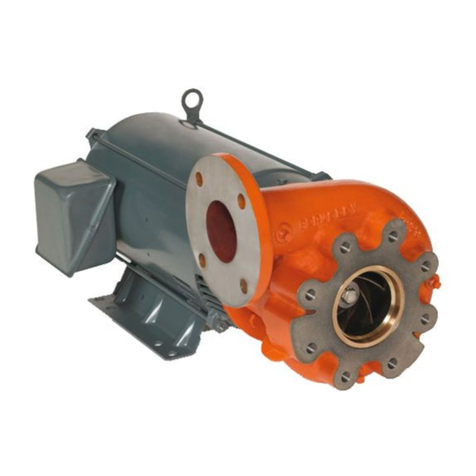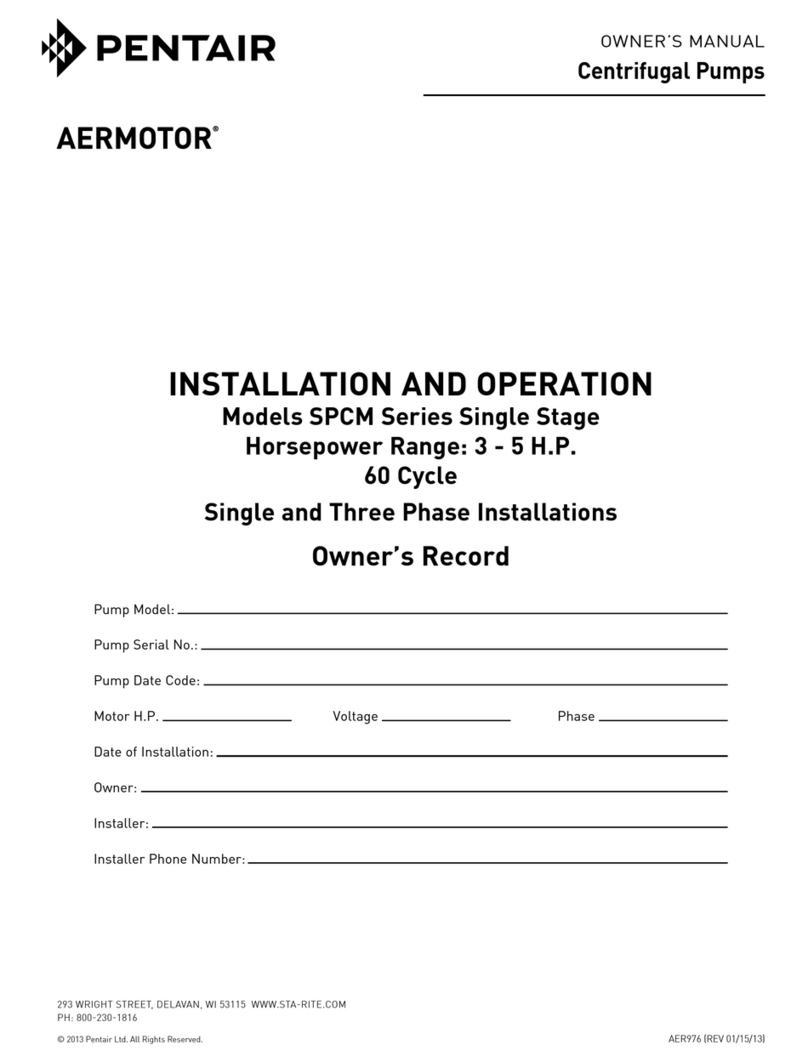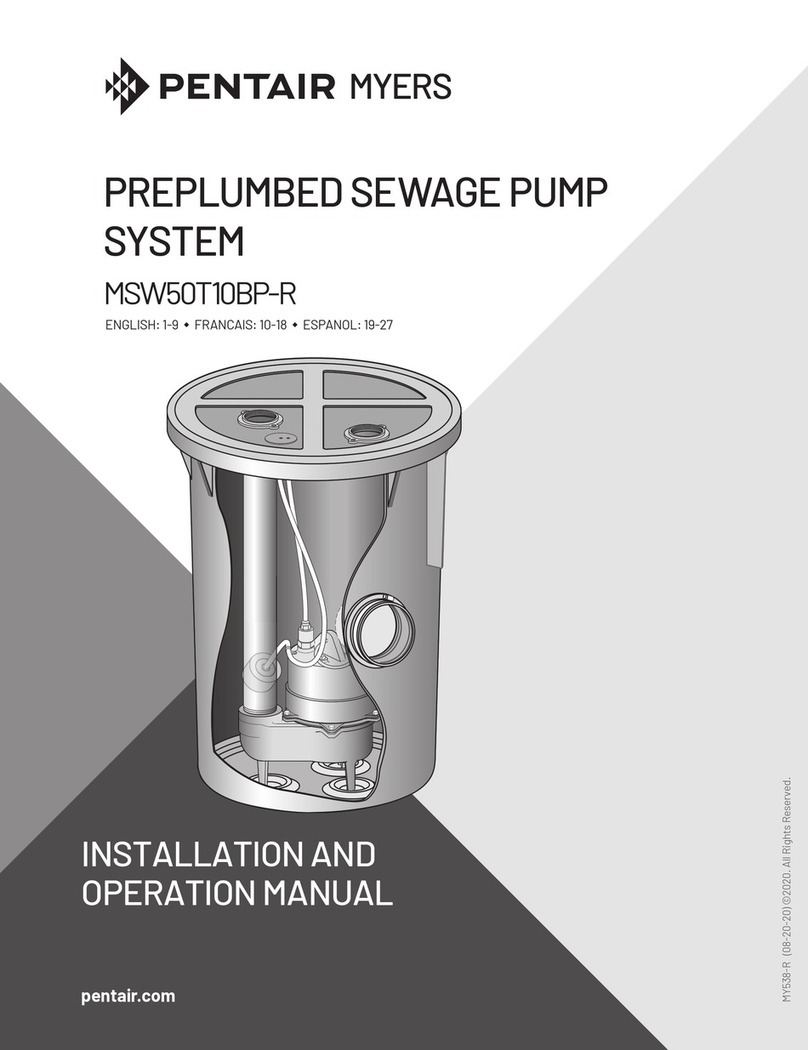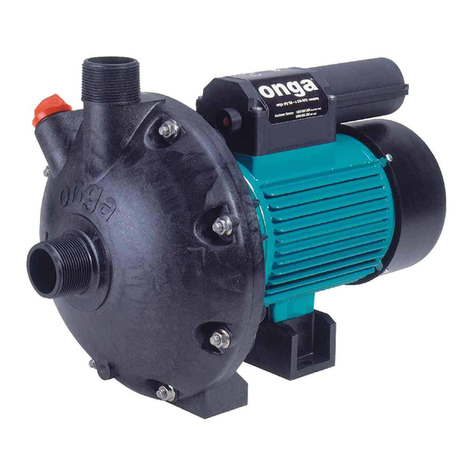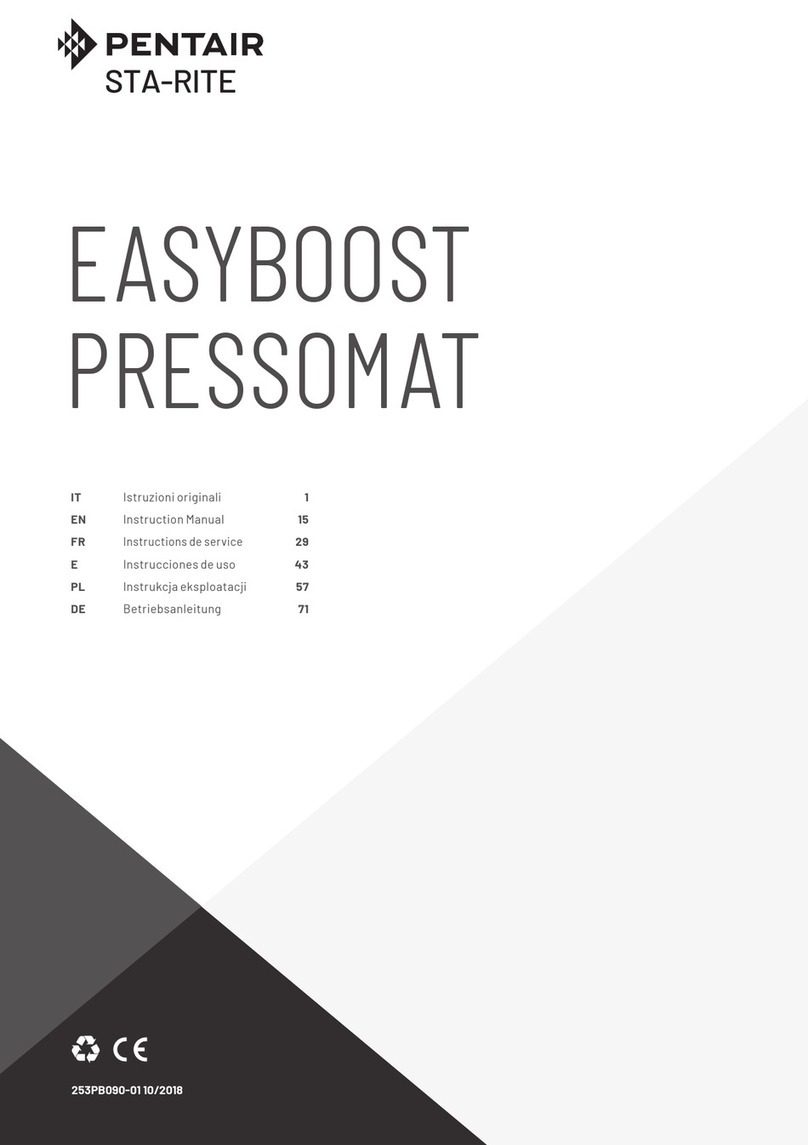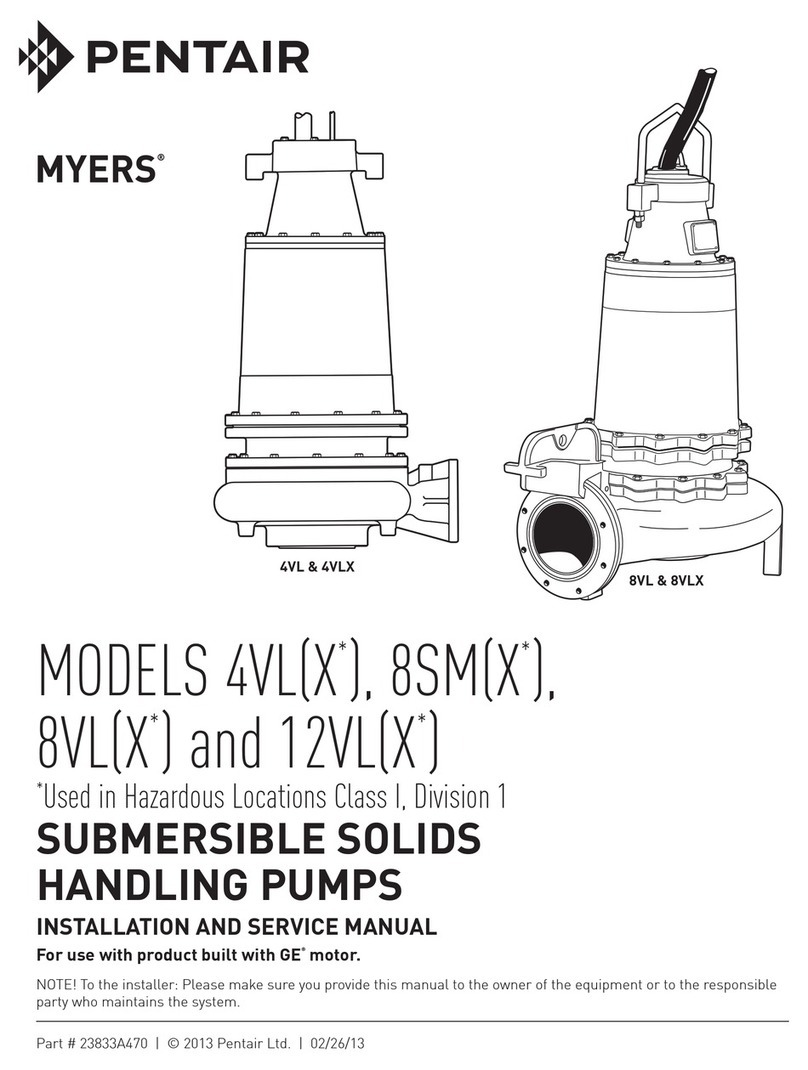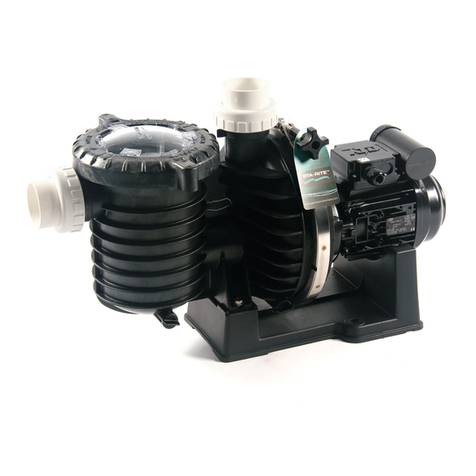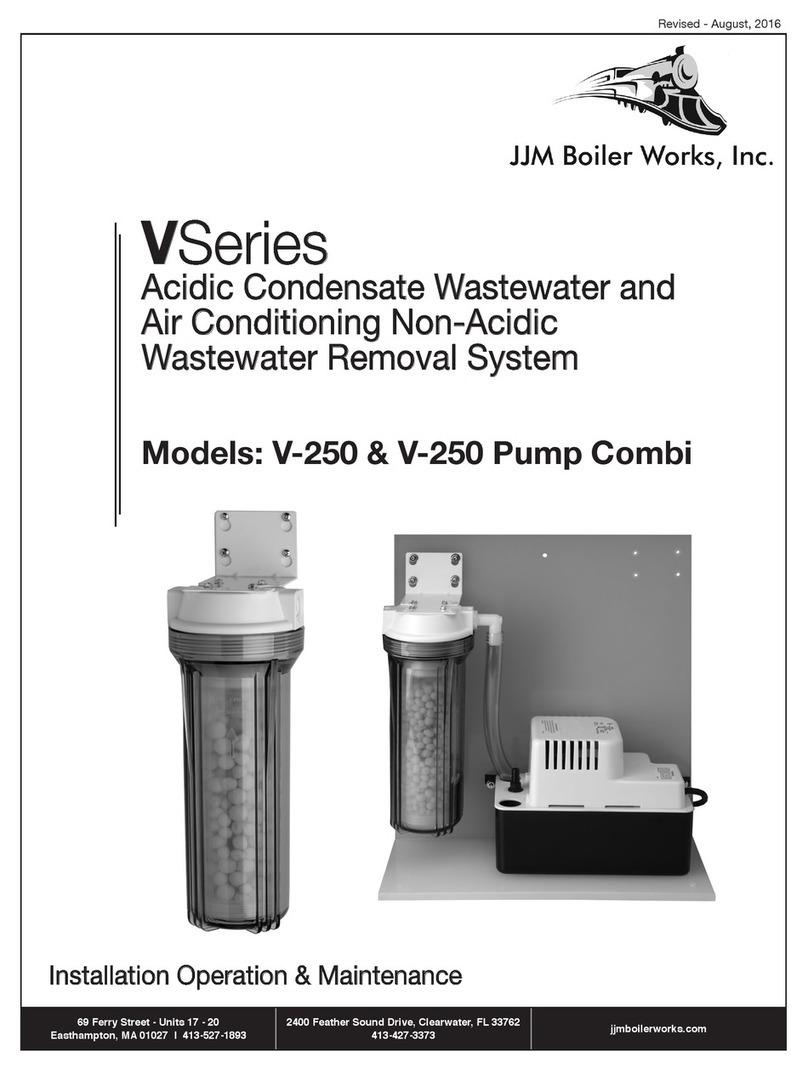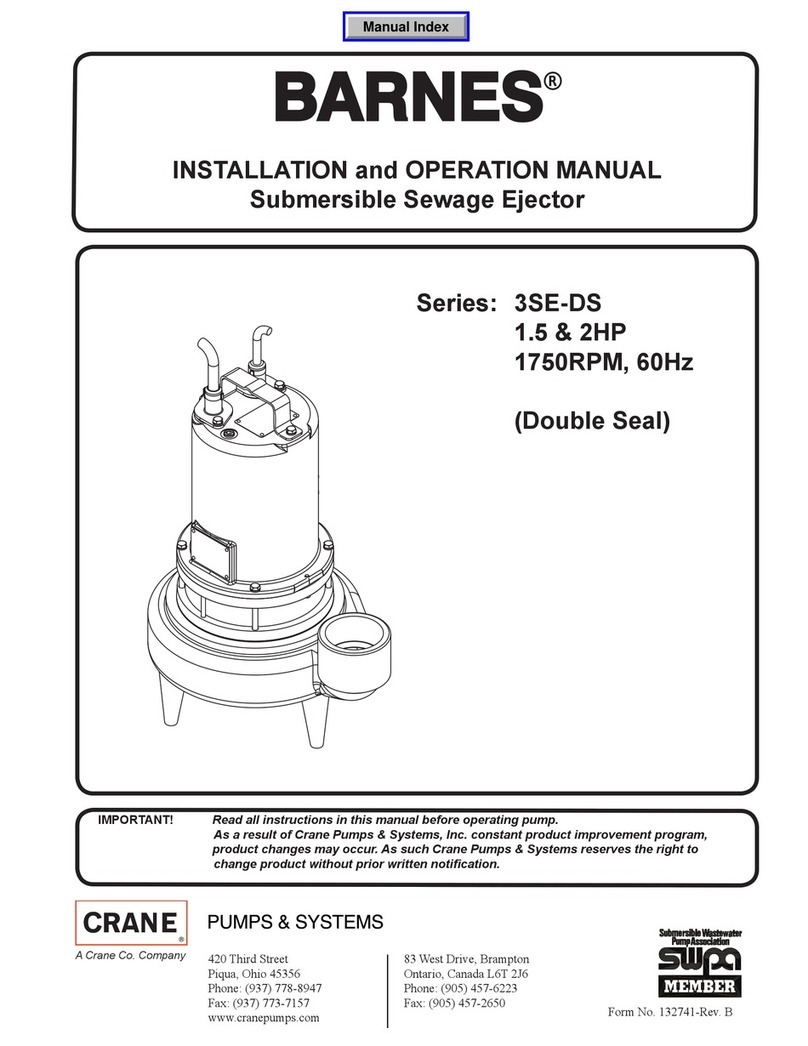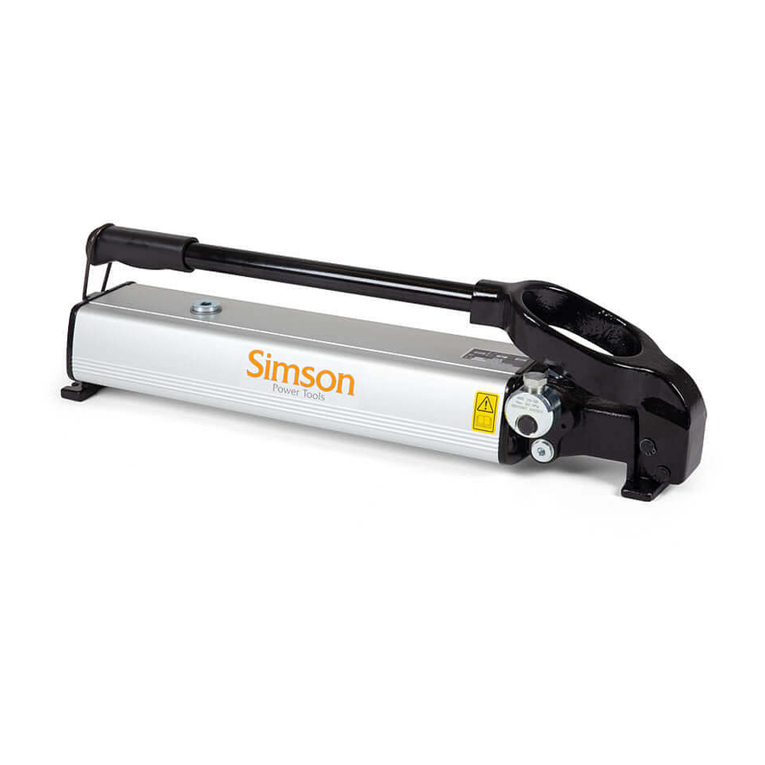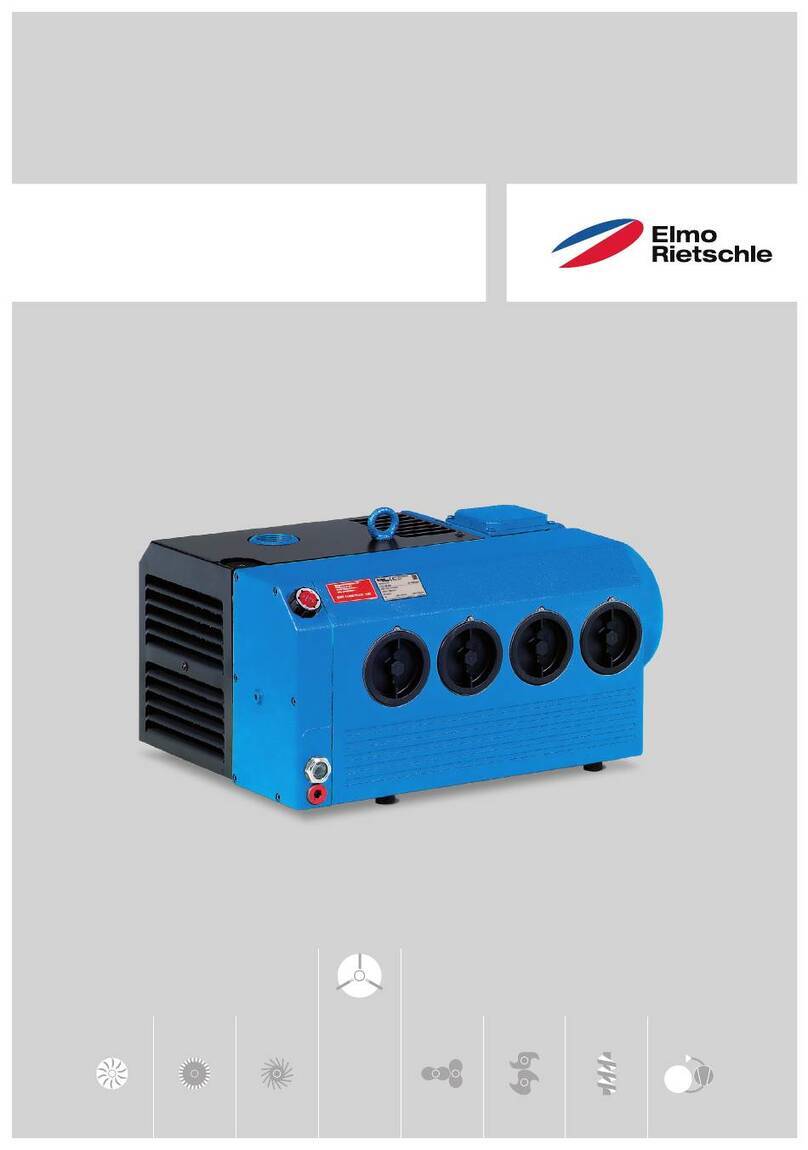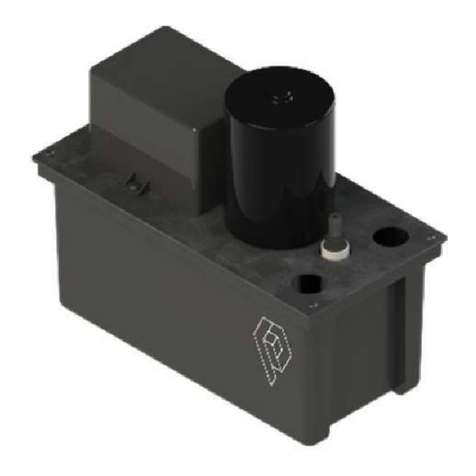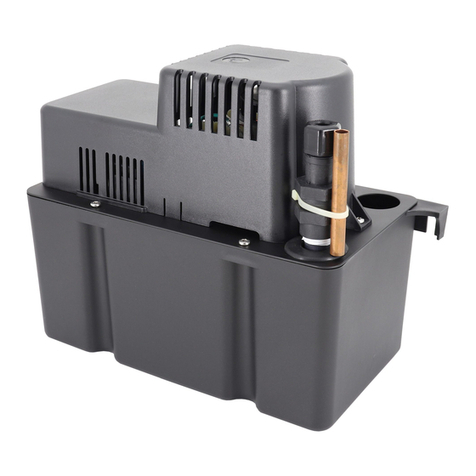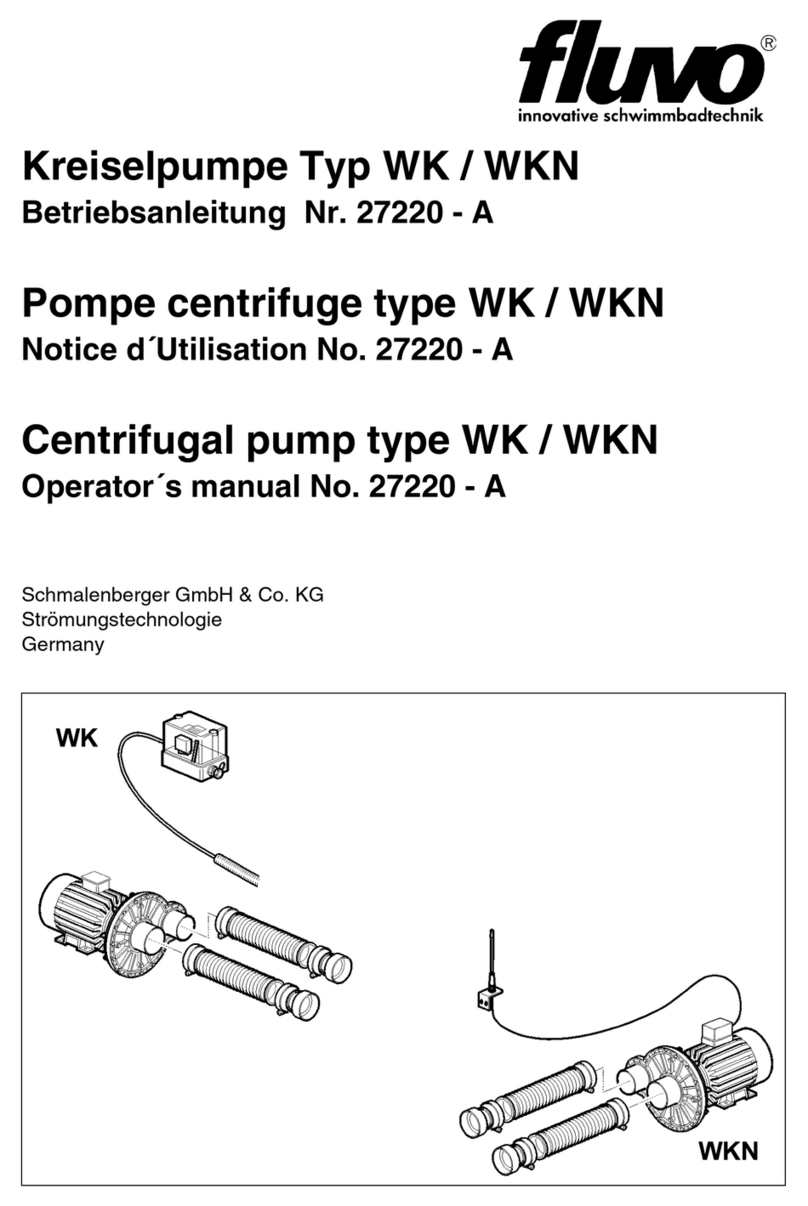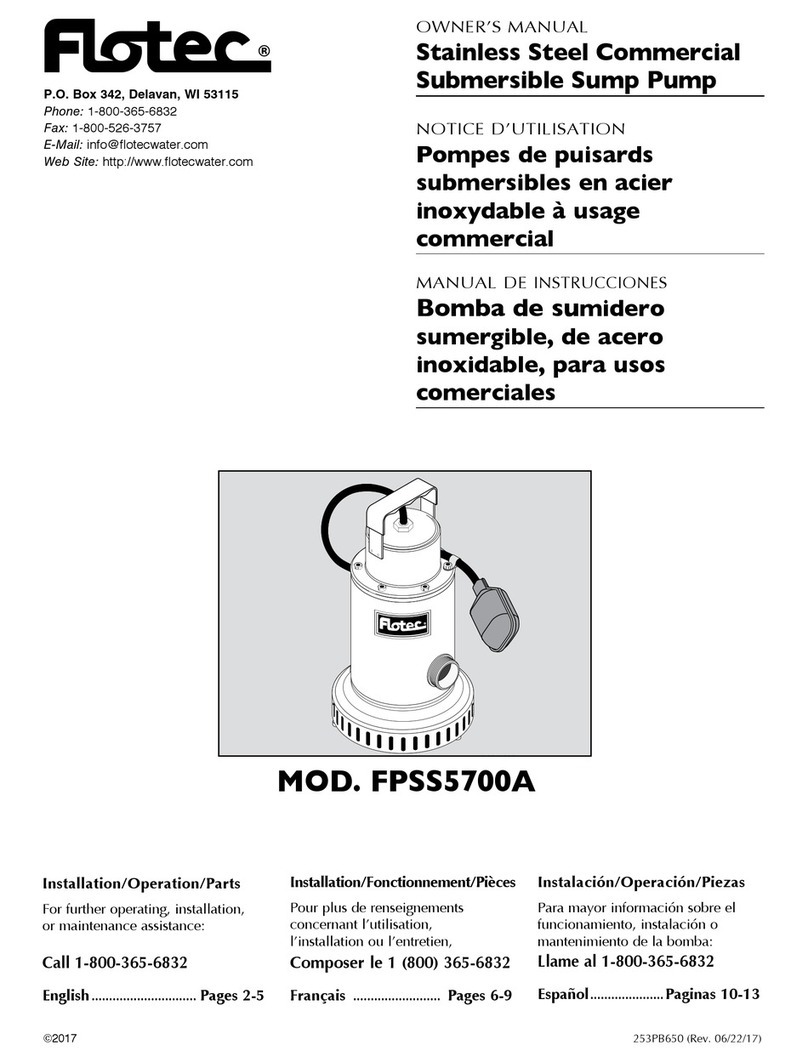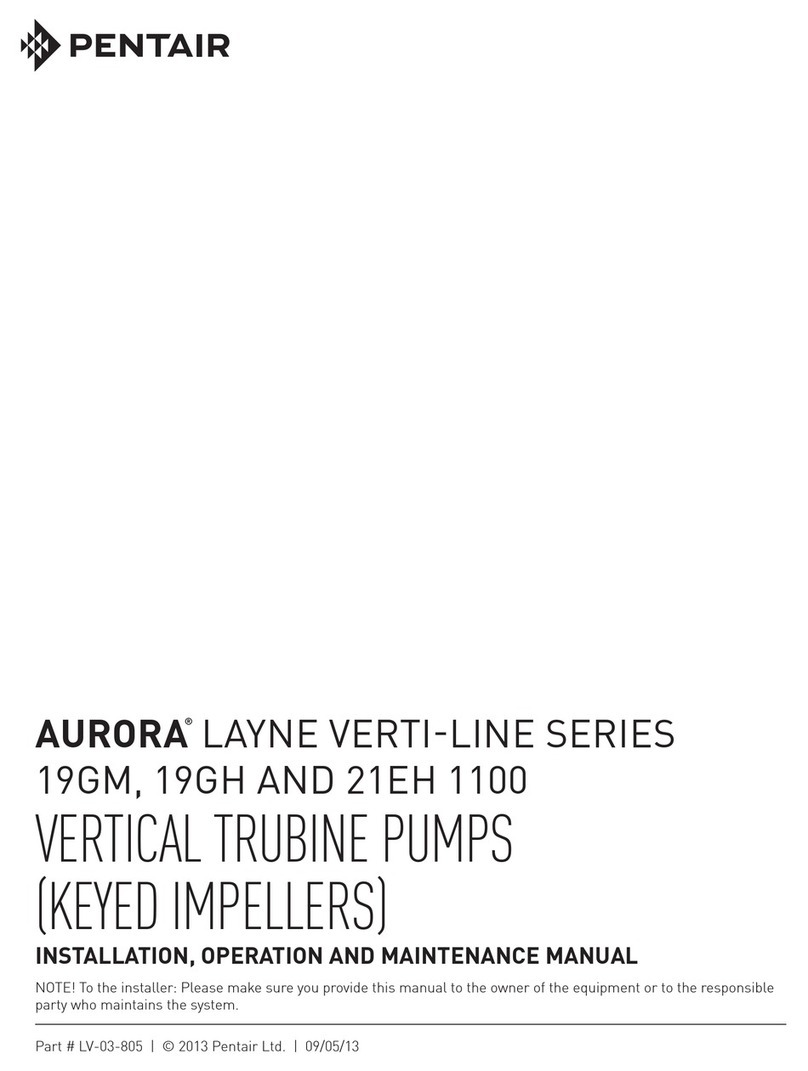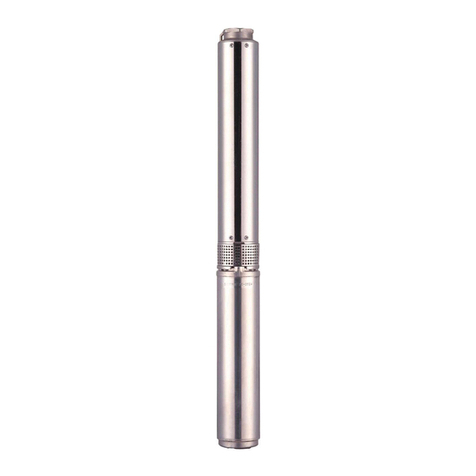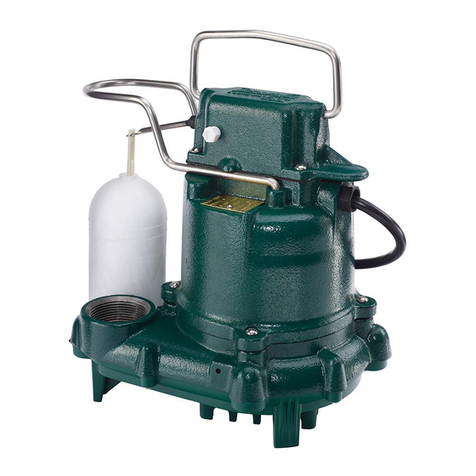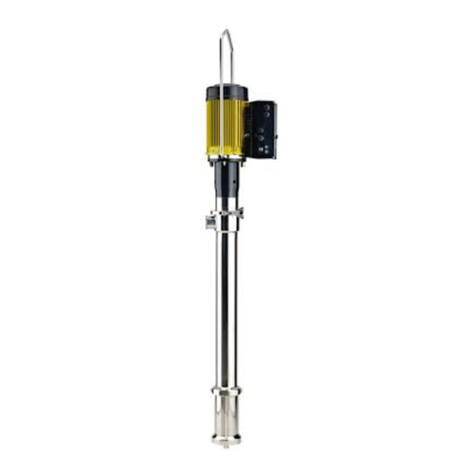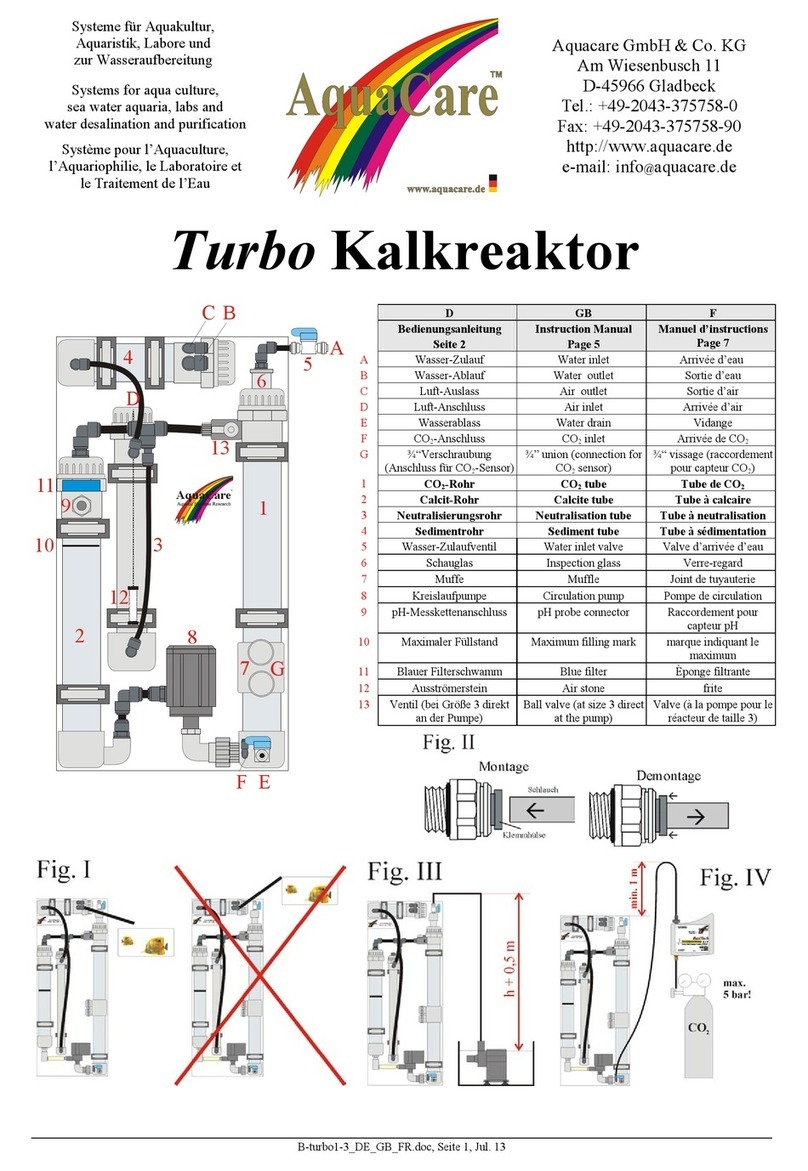
3
The float is held in position in
the sump by a weight attached to
the power cord above the float.
The cord supports the float and
is adjusted for height from the
surface.
Duplex systems use three
controls: one set at turn-off, one
set at turn-on for one pump, and
one set for turn-on for two pumps.
Pumps alternate operation on each
successive cycle.
Two pumps operate together only
if sump level rises to the third
or override control. The override
control also brings on the second
pump in case of failure of the first
pump. The extra float is for alarm.
Triplex systems use four controls:
one set at turn-off, one set at
turn-on for one pump, one set
at turn-on for two pumps, and
one set at turn-on for three
pumps. Pumps alternate each
successive cycle.
Three pumps operate together
only if sump level rises to the
fourth control (second override).
This control also brings on
the third pump in case of failure
of either or both of the first
two pumps.
Alarm Controls:
The alarm level is usually set
above the override level so the
alarm will signal only if the
override level is exceeded.
However, some engineers prefer
to have the alarm level set below
the override level as it is possible
for one pump to fail and the other
pump to operate on the override
level with the sump level never
reaching the alarm level. This is
particularly true in cases of low
inflow capacity.
Electrical Control Panel:
Hydromatic electrical equipment
is installed in a weatherproof
NEMA 3R enclosure. The
electrical equipment includes
a main circuit breaker for each
pump, a magnetic starter with
overload protection for each
pump, an H-O-A switch and run
light for each pump, an electric
alternator and a transformer to
provide appropriate control for
control and circuit and alarms.
Installation
Instructions
Installing Pump in Sump:
Before installing pump in sump,
lay it on side and turn impeller
manually. Impeller may be
slightly stuck due to factory test
water, so it must be broken loose
with small bar or screwdriver
in edge of vanes. After breaking
loose, the impeller should
turn freely.
Clean all trash and sticks from
sump and connect pump to piping.
A check valve must be installed
on each pump. A gate or plug
valve in each pump discharge
line is also recommended. This
valve should be installed on the
discharge side of the check valve
so if it is necessary to service the
check valve, the line pressure can
be shut off.
NEMA IV Junction Box:
(Optional)
This must be used with 60 and
above horsepower pumps and
with all systems if the electrical
control panel is to be set remote
from the pumps. The Hydromatic
NEMA 4 junction box is provided
with compression connectors
for sealing all wires. No sealing
compound is needed to make
connections waterproof.
Wiring diagrams are provided
with the panel for making
connections. The size wire to use
from panel to sump depends on
motor size and distance in feet.
Be sure each wire is checked
so that a wrong connection will
not be made. An ohmmeter or
Megger can be used to check
wire continuity.
Installing Float Switch Controls:
The controls are supported by a
mounting bracket that is attached
to sump wall, cover, or to the
NEMA 4 junction box. Cord
snubbers are used to hold the cord
in place. Control level can be
changed at any time by loosening
the snubber and readjusting
cord height.
In either duplex or triplex
systems, the bottom of the lower
or turn-off control is set just above
the top of volute, so that the volute
will always be submerged during
the pumping cycle. The second,
or turn-on control, is set about
24 inches above the lower turn-off
control.
More distance between turn-on
and turn-off controls can be used,
but sewage may become septic,
and excessive solids may collect
for the pump to handle. A frequent
pumping cycle is recommended
for best operation.
In a duplex system the third or
override control is usually set
about 6 inches above the one pump
turn-on control.
In a triplex system the third or
override control is usually set
24 inches above the one pump
turn-on control, and the fourth
or second override control is
24 inches higher.
If an alarm system is used, this
control is usually set about 6
inches above the override control.
Making Electrical Connections:
All electrical wiring must be in
accordance with local codes, and
only competent electricians should
make the installations. Complete
wiring diagrams are glued to the
inside cover of the panel. All wires
should be checked for grounds
with an ohmmeter or Megger after
the connections are made. This is
important, as one grounded wire
can cause considerable trouble.























